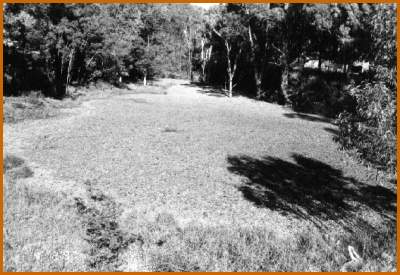 
Newsletter Ian Sinclair, Noxious Weeds A weed can be described as an unwanted plant. It has been estimated that 17 % of Australia's flora consists of exotic weeds. In fact, of the 200 plants that have been declared noxious nationwide, nearly half were introduced as ornamentals or for other reasons. They have an impact on primary production as well as invading bushland and waterways. The problem is getting worse, not better, as we have created favourable conditions for them to spread. You might ask what they have to do with planning? We mostly think about weeds as having an impact on agricultural uses and therefore only a problem to the farmers. However, weeds are becoming a problem to the community at large as they invade the urban and rural environment and the bushland. This is due in part to the expansion of our urban areas as well as the increasing amount of rural residential uses and hobby farms with absentee landlords. These create favorable conditions for the weeds to prosper. There is an increase in the nutrient levels with on-site effluent disposal and the location of development (both urban and rural residential) near to bushland causes weed invasion through the nutrients killing the indigenous vegetation as well as "garden escapes" where weeds overgrow into the bushland. Weeds can also grow on the exposed earth as the subdivision is being developed.  As I have said, a weed is an unwanted plant. We often use the term "noxious weeds" to describe the invasive weeds. In fact, the term "noxious weed" only refers to weeds that are causing serious damage and there is a clear public benefit to be gained by the government stepping in and controlling it. The declaration of a weed as noxious varies from Council to Council. The list of all weeds declared noxious in the Sydney and Illawarra region alone is 71. The names include Blackberry, Lantana, Morning Glory, Alligator Weed, Bitou Bush, Pampas Grass, Serrated Tussock, Water Hyacinth, Salvinia, Privet and Balloon Vine. The total list for NSW is considerably larger. Weeds are voracious. They can be water or land based - some can be both! Water based weeds especially can be a major problem. Two such examples are Alligator Weed and Salvinia. Both are introduced species and most people know Salvinia as the plant that is in a lot of fish tanks. As the photo of this dam covered in Salvinia shows it can be a real problem. Both Alligator Weed and Salvinia can grow to such thickness that it can be walked on! When it covers the entire waterbody it kills all other plant and animal life. There are other plants that are not declared noxious but can be just as invasive. A good example is Kikuyu, which is a grass on many backyards. It thrives in nutrient rich situations such as at the end of a septic irrigation area. It is also one of the most common "weed invasions" into bushland. So why is it a planning issue? It is true that the planning system cannot solve the entire problem and it is recognised that it is one that should be the focus of the entire community including the three levels of Government. Planning for new areas can play a part by ensuring that the issue of noxious weeds is addressed in the rezoning studies as well as ensuring that a weed eradication plan is submitted to the Council with the development application for the subdivision. This has been done by Wollondilly Shire Council in the East Buxton Local Environmental Study (LES) and Rural Urban Fringe Subdivision DCP. The LES and accompanying Flora and Fauna Study addressed the issue and noted that the impact of noxious weeds needed to be addressed on two levels - short term and long term. The short term response is to have a requirement in the DCP to provide for the eradication of noxious weeds and encourage the growth of local native species. It is a requirement that prior to the development of the site, the developer must submit a "Weeds Eradication Plan" which will outline the proposed treatment of declared noxious weeds for implementation prior to any disturbance of the site and prior to the implementation of any Soil and Water Management Plan. The longer term view must be taken by the owners as well as the Government agencies. This is discussed in more detail in the NSW Weeds Strategy published by NSW Agriculture. So, the common weed is a planning issue, which affects rural planning in a major way. It could be said that noxious weeds are a time bomb that has exploded it is an issue that the planning system can address in the Rezoning and DA stages. The planning system can do its part by looking at the issue in the rezoning and development stages. Top of page... |
|
|| Rural Planning Wheel || launched March, 1999 http://www.ruralplanning.com.au/ |
|